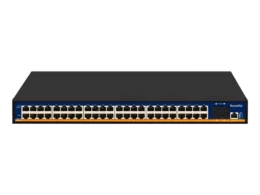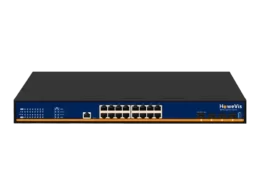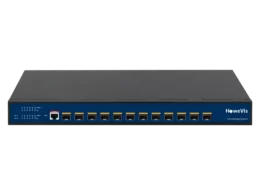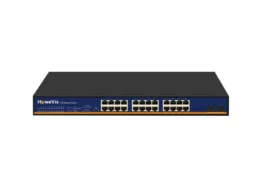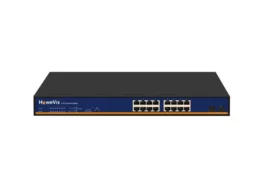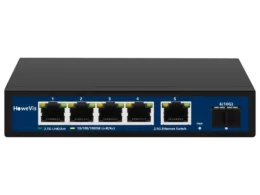Ethernet is a rapidly emerging technology among internet service providers(ISPs). The incredible facts about 10G Ethernet are low network latency and higher data speed. You know, how do you acquire 10G Ethernet in your network? The answer is quite simple: Ethernet switches. Multiple Ethernet switches enable easy access to 10GB Ethernet.
Internet technology has achieved milestones with time. Now, you have blockchain technology, Artificial Intelligence, and Machine Learning. All require internet at a very high speed. Is there any solution to synchronize them at once? Yes, employ Ethernet technology. Combining all these advanced things will exceed your expectations in NAS(network-attached storage) or home use.
What is a 10GB switch?
10GB Ethernet is an Ethernet technology that employs Ethernet ports to provide speed for data. Can you guess the data speed? Roughly 10 gigabytes per second are spent browsing and 1.25 gigabytes per second when transferring.
10GB Ethernet switches connect multiple devices over the network and provide them with high-speed data.
Devices like computers, laptops, and digital machines must synchronize and update the data. A problem appears when connecting your PC, digital appliances, and even smartphones. A network switch acts as an integration device to enable the data speed.
10GbE switches work on the same principles introduced by IEEE. So, it is now better for you to understand the simple concepts.
2 Fundamental types of 10GB switches
10GB switches can be of multiple varieties. To narrow down the research, I have mentioned two basic types of controls here. In those two basic types, you can come up with numerous others.
Copper switches
Copper switches include the use of copper wires. Surprisingly, the earliest 10GB switches had copper ports. So, we can not deny the use of copper switches, which are far more feasible and effective for telecommunications companies’ data speeds.
However, here are the types of ports used in copper switches.
10GBASE-CX4
10GBASE-CX4 is the first version of 10GB switches that use the IEEE 802.3ak-2004 standard. It has a 15-meter range with advantages like low network latency, inexpensiveness, and ease of operation.
10GBASE-T
10GBASE-T works on the principles of the 802.3an-2006 standard. You can enjoy 10 gigabytes per second data speed over unshielded or shielded twisted pairs of copper wires. However, its range is 100 meters.
10GBASE-T1
The latest copper switch works on the standard 802.3 ch-2020. The range is 100 meters.
Optical Fibers switches
Optical fiber can be of two types. One is a single-mode optical fiber, while the second is a multimode optical fiber(MMF). Both have different properties. For example, single-mode fiber(SMF) allows the light to follow a single pathway to reach the far end. At the same time, MMF offers multiple different paths to get the desired end.
Optical fiber switches utilize optical fiber to authorize higher speeds at longer distances. For example, you can extend your data speed network to more than 100 meters.
However, several types of optical fiber switches are based on the range and Ethernet technology. I have listed some of them.
10GBASE-SR
10GBASE-SR refers to a short-range Ethernet port for multimode fiber. It employs the 850 nanometers laser and allows a network range of up to 400 meters.
10GBASE-LR
It is a long-reach single-mode optical fiber that employs a 1350 nanometers laser. The maximum range for this optical fiber system is 10 kilometers.
10GBASE-LRM
Unlike 10GBASE-LR, long-range multimode fiber technology is specific for multimode options. It uses a 1310 nanometers laser and employs the 802.3aq standard.
10GBASE-ER
The extended Ethernet port is for single-mode fiber optics and uses the 1550 nanometers laser beam. It has a range of 10 kilometers.
Is a 10GB switch worth it?
Before deciding whether the 10GB switches are worth it, let me describe the basic requirements for a network.
A network has the following technical tools:
- Computers
- Modems
- Routers
- Electrical wires or maybe a wireless system for the data networks
All these collectively work to stimulate the high performance of the network. So, what are the technical requirements for a network?
- The flexibility of the power supply
- High-speed data networks
- Network virtualization if needed
- Low latency
- High performance
When it comes to 10GB Ethernet switches, you have them all in one. For example, high-speed data, easy access to virtual networks, and enhanced techniques to downgrade network latency. In that aspect, I would say, “10GB switches can be the ideal one.”
However, here are the following advantages of 10GB Ethernet switches:
It extends support for the converged environment.
Since we have been coming up with imaginative ideas for a few years, there are still many problems. For example, there are multiple bottlenecks in the pathway of network performance. You can’t rely on gigabytes of data speed unless you possess a high-performing network.
For NAS storage, you need to manage the data and its implementation. Server down for a single minute would cost you.
So, how will you reduce these bottlenecks?
Though a good question, the answer is simple: 10GbE switches. They will improve your network performance and facilitate virtual networking without deploying multiple tools. That’s why 10GbE has been a top choice for network-attached storage areas, intensive data usage, and small to medium business enterprises.
It provides a higher bandwidth to support high speed.
Higher bandwidth is always fascinating for networks. It determines:
- Data transfer rates
- Size of the network to support
- Number of devices to support
If the bandwidth is higher, you can expect higher data transfer rates in more extensive networks with numerous devices employed simultaneously. Bandwidth is always a good idea for improving data speed.
In the case of 10GbE, you obtain 10 gigabytes of data speed with 1.25 gigabytes of transfer speed. By that means, higher bandwidth for this transfer rate will permit:
- 4K video streaming
- Online AR and VR gaming
- Online streaming on social media sites
- Data transfer between the computers
So, it is not only a tool for NAS use; you can also employ it in home networks to achieve greater feats in the world of technology.
Backward compatibility with the Ethernet ports enables easy up-gradation.
You can’t rely on the old techniques. With the momentum, you need to run at the speed of time. Network up-gradation is a problem that appears at such times. So, it would be best to have a strategy to implement the plans.
Network up-gradation is a substantial problem. But what if you upgrade the network? Will it still work with previous technology? This question is yet to be answered when you use other technologies. In the case of 10GbE, if you currently use the Cat6a port, it will be compatible with the Cat5e—no worries about the network upgrade and backward compatibility.
It makes the 10GbE to be favorable for the networks.
To determine whether you need 10GbE, check out the guide—Do I need 10GB Ethernet?
EndNote
10GbE switches play a tremendous role in network management. They link multiple devices over a single network and provide the internet. With 802.3 standards, they are backward compatible and have higher bandwidth to ensure you get the promising solution.

